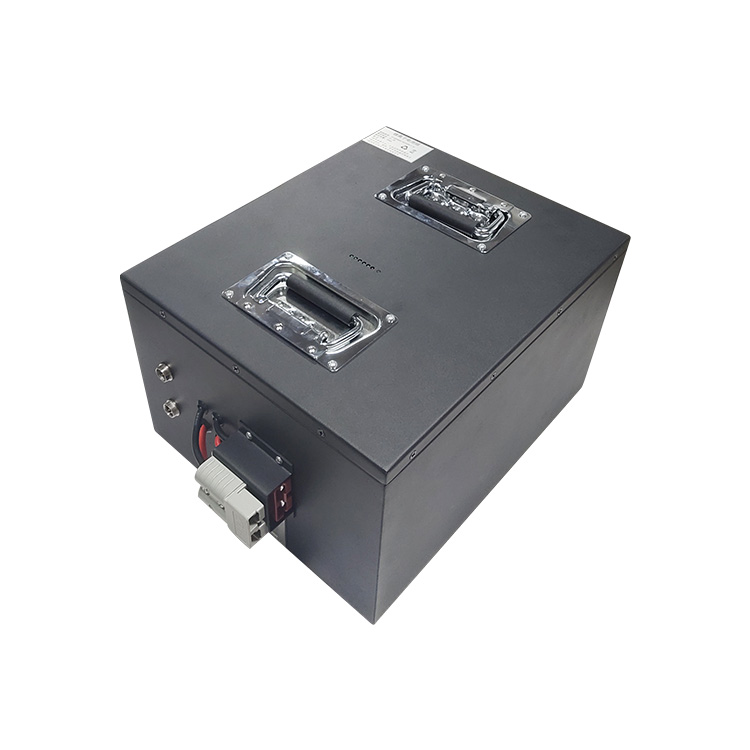Great Changes in European Energy Storage Market!
Recently, industry rumors that Germany's source network side Energy storage is about to usher in a big outbreak, and it is expected that the installed capacity of large energy storage systems in Europe will surpass that of household energy storage systems for the first time in 2024, becoming a promotion. Energy storage market the main force of growth. Among them, Germany, Britain, Italy and other countries have shown outstanding performance in deploying large-scale energy storage projects.
German energy storage market on the source network side will exceed the growth rate of household storage
according to statistics from ISEA & RWTH Aachen University, from January to July, 2024, German household reserves increased installed capacity by 2587MWh, year-on-year-on-year-to-14.48, of which the household reserves increased installed capacity by 319MWh in July, household savings-36.58% year-on-year. From January to July, 2024, the German Grand Reserve added 231.59MWh, a year-on-year increase of +65.69 percent. Among them, the storage capacity was 23.6MWh in July, which was significantly higher than the zero-installed capacity in July 2023.
Other data show that in June, 2024, Germany's new energy storage installed capacity was 260.4MW/389.3MWh, and the capacity installed capacity decreased by 26% year-on-year and 7% month-on-month. The performance was still relatively sluggish. Among them, in June, the newly installed capacity of household storage was 255MW/372MWh, which was-28%/-3% respectively compared with the same period. The main reason for the weakness was the decline of photovoltaic installed capacity, in June, the year-on-year decline of Germany's photovoltaic installed capacity increased from-11% to-18% compared with that in May, and the downward trend was more obvious.
At the same time, Germany's pre-inventory and industrial and commercial energy storage increased year-on-year, but the absolute growth was relatively limited. In June, the newly increased installed capacity of the former German reserve reached 14.9MW/29.7MWh, the same-month ratio is +22%/+143% respectively; Industrial and commercial energy storage new installed capacity 7.26MW/17.6MWh, the same-month ratio is +17%/-2% respectively.
A significant change can be seen from the above data, that is, the German energy storage market is being stored by households.A pattern moves towards diversification, in which the energy storage market on the source network side will exceed the growth rate of household reserves, which means that new markets are gaining momentum in Germany and even Europe.
Britain and Italy become the driving force of European big reserve growth
with the rapid growth of German reserves, Britain and Italy are also important driving forces for the growth of European reserves in the short term.
The UK energy storage market has always been dominated by large reserves. The Project case and policy framework are relatively perfect. The installed capacity has doubled every year since 2020. The European Energy Storage Association (EASE) predicts that it is expected to continue to grow in the next two years. In the first half of 2024, the installation capacity of the British Big storage was temporarily affected by the pace of the project. The improvement of the delay of grid connection was relatively limited. In June, the scale of grid connection was only 0.12MW,2024Q2 new installed machine 178.3MW, with a relatively large decline.
According to Modo Energy statistics, in the first half of 2024, the UK large storage capacity was 0.32GW, year-on-year-on-year-58.7%, the planned grid-connected scale reached 1 at the end of the third quarter. 1GW, but the actual operational scale is expected to be only 150-430MW. Judging from the current situation, the UK reserve still needs to wait for further optimization of the approval process to return to the high growth in 2023.
At the same time, Italy has set a renewable energy target in 2030, and plans to invest 17.7 billion euros to build a large storage project in the southern and island areas, with a planned installed capacity of 9GW/71GWh. According to the forecast of EASE, the installed capacity of big storage in 2024 will be mainly in Britain and Italy. By 2030, the installed capacity of other European countries will start to increase, and the cumulative installed capacity in Europe is expected to reach 71GW/172GWh.
European market will shift from household reserve to large reserve
industry insiders believe that the main reason for the year-on-year decline of household storage installed capacity in the European market in 2024 is that the downward superposition of some state subsidies has an impact on household storage demand.In terms of electricity price, in June 2024, the average wholesale electricity price in 28 European countries was 76.38 euros/MWh, a year-on-year ratio of-14.64%. Looking back to 2022, the wholesale electricity price in Europe has dropped sharply, and gradually transmitted to the terminal electricity price. According to HEPI statistics, the European terminal electricity price has dropped to 0.242 euros/kWh in July, 2024.
In terms of policy retreat, Italy's Superbonus plan will be implemented in 2020, and the tax credit for household storage equipment will be increased to 110%, at the end of 2022, Italy made it clear that the tax credit amount in 2023-2025 would be reduced to 90%, 70% and 65% respectively. The decrease of electricity price and the subsidy will inevitably affect the energy storage demand. According to data, the installed capacity of Q1 energy storage in Italy in 2024 reached 440MW/914MWh, with a year-on-year ratio of-25.9%/-21.3%.
Judging from the delivery of the inverter, the export volume from China to Europe has been on the rise from 3 months. In June, 2024, the export volume from China to Europe reached 2.465 billion yuan, with a ratio of +2.7 percent. At present, european inverter going to the library is coming to an end. With the increasing number of large-scale photovoltaic projects and the increasing electricity consumption of residents year by year, the demand for large storage in Europe will be released.
According to the prediction of SPEs, the installed capacity of European large storage will reach 11GWh in 2024, with a year-on-year ratio of +205%. In 2024, the installed capacity of large storage will account for 49%, exceeding the installed capacity of 39% of household storage. Spes predicts that the installed capacity of large storage will reach 35.9GWh by 2028. that is to say, in recent years, the European energy storage market will gradually shift from household storage to large storage.
Negative Electricity Price accelerates deployment of energy storage projects in Europe
in addition, negative electricity prices have become the norm in Europe and other places. According to the Dutch energy market data released by Strategy, a Dutch research institution, from January 1 this year to August 14, the Dutch EPEX in stock futures market had a negative electricity price of 347 hours, it has exceeded the 316-hour negative electricity price last year.
In a word, the increasingly serious phenomenon of negative electricity price in Europe not only exposes the shortage of power grid flexibility, but also highlights the importance of energy storage technology in energy transformation. Energy storage system can effectively alleviate the problem of negative electricity price by balancing the relationship between supply and demand, improving economic benefits, improving the stability of power grid and promoting the absorption of renewable energy.
In recent years, European governments have promoted the development and application of energy storage technologies by formulating a series of incentive policies, such as tax relief and subsidies, and by setting energy storage deployment targets, systematically incorporate the energy storage system into the renewable energy auction and allow the battery energy storage system to operate in all power markets.
Meanwhile, in order to reduce external dependence, Europe is accelerating the localization construction of energy storage industry chain. Encourage local enterprises to plus-sized R & D investment and production scale through measures such as setting targets, introducing regulations and fund support. In the next few years, with the continuous progress of energy storage technology and the further reduction of cost, energy storage system will play a more important role in alleviating the problem of negative electricity price and the process of energy transformation in Europe.
Changes in carbon footprint accounting standards will have a significant impact.
It is worth noting that starting from 2025, batteries sold in the EU region will be forced to submit carbon emissions, and in 2028, the battery carbon footprint will be graded, and batteries beyond the carbon emission threshold will be banned. In the whole life cycle of the battery, the proportion of power carbon footprint is 40%.-50%, and mandatory reporting of the carbon footprint of batteries and changes in the accounting standards of carbon footprint are particularly unfavorable to Chinese battery enterprises.
Earlier on August 17, 2023, the EU battery and waste battery law (EU) /1542 came into effect, which also marked that the EU battery industry has entered a new era of sustainable development. The bill puts forward strict requirements on the whole life cycle management of batteries, especially for key fields such as power batteries, light transport batteries and industrial batteries, forcing batteries to provide carbon footprint statements, and implement the battery tag and passport system. In addition, the bill also stipulates the proportion of renewable metals and strict recycling targets, aiming at promoting the green transformation of the battery industry.
However, in these measures, merely forcing the battery to provide a full life cycle carbon footprint statement is enough to make Chinese battery enterprises export in a dilemma. According to data from the National Bureau of Statistics, China has become one of the world's largest battery producers, but enterprises still face many difficulties in carbon footprint accounting.
First of all, the EU's complex accounting standards are incompatible with the existing domestic standards. The high modeling costs and huge data collection requirements further increase the operating costs and time costs of enterprises.
Secondly, in terms of the calculation of power carbon footprint, the European Union's "methodology for calculating and verifying the carbon footprint of electric vehicle batteries" mentioned in the draft for comments, except for the direct connection of new energy power (direct power supply and distributed photovoltaic), all online electricity (including green electricity) requires the use of the national grid average emission factor to calculate carbon emissions.
There are two changes that need attention:
the EU only recognizes direct green power in its new policy. However, in China, the supply cost of direct power supply for new energy is relatively high, which makes it difficult to realize, especially for Chinese battery enterprises that rely on power grid for power supply.
The average power emission factor is defined in the national scope. China's average power emission factor is 0.582, compared with European countries, France, Sweden, Norway emission factor is even less than 0.06, and China uses coalThe electricity-based power supply structure is difficult to change in the short term.
According to the data of the National Energy Administration, power emissions account for more than 40% of the carbon footprint of battery products, while the new policy only supports direct connection of green electricity in terms of power supply, and the power emission factor is defined by the state.
These objective factors will have a significant impact on the export of Chinese battery enterprises to Europe. Therefore, it is urgent to Mark EU Gos and urge the country to rely on the greenhouse gas emission factor database, establish a residual emission factor system suitable for the battery industry, and promote the mutual recognition and unification of international and domestic carbon footprint calculation standards and factor libraries.
 Dongguan Juneng New Energy Technology Co., Ltd.
Dongguan Juneng New Energy Technology Co., Ltd.
 137 5142 6524(Miss Gao)
137 5142 6524(Miss Gao)
 susiegao@power-ing.com
susiegao@power-ing.com
 Xinghuiyuan High tech Industrial Park, Dalang Town, Dongguan City, Guangdong Province
Xinghuiyuan High tech Industrial Park, Dalang Town, Dongguan City, Guangdong Province













 Yue Gong Wang An Bei No. 4419002007491
Yue Gong Wang An Bei No. 4419002007491